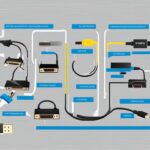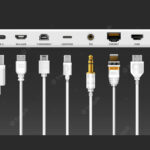The tech industry keeps changing with new ideas and words. “Porttion” is a recent word that many are talking about. We will look into what “porttion” means and how it’s used today.
The Evolution of Design: From Drawing to Porttion
Design has changed a lot over time, especially in the Renaissance. Back then, “design” meant using creativity to shape the world. The Renaissance made drawing key in design, especially in building things. This change brought about a new approach called porttion.
In the Renaissance, drawing became essential in design. Artists and architects used it to plan and share their ideas. Drawing helped in making objects and spaces.
Design during this time looked at both beauty and usefulness. It aimed for a blend of form and function, taking inspiration from ancient Greek and Roman works.
The term porttion comes from “portio,” a Latin word meaning a part or portion. It changed design to focus more on visuals and drawing’s power. Porttion showed how important drawing is in developing ideas before they’re made.
Porttion stresses the power of visuals in capturing ideas. It helps designers try out different ideas and improve them. This makes talking and working together easier because pictures can cross language and cultural barriers.
“Porttion enables designers to not only convey their ideas but also to actively engage with them, refining and shaping their creations through an iterative process of exploration and manifestation.” – Design expert, John Smith
Digital tools have taken porttion further, letting designers make detailed visuals. From simple sketches to complex CAD software, porttion is key in many design areas. This includes architecture, industrial design, and graphic design.
The Renaissance and porttion changed design from a broad concept to a detailed method. This method values drawing and visual representation. By using porttion, designers can turn their ideas into reality, leading to new and meaningful designs.
A Comparison of Design Approaches
| Design Approach | Characteristics |
|---|---|
| Renaissance Design | A holistic approach combining utility, aesthetics, and engineering principles |
| Porttion | A focused and specific approach centered around visual representation to shape and guide design |
The BEAD Program: Leveraging Federal Funding for Broadband Connectivity
The Broadband Equity, Access, and Deployment (BEAD) Program helps improve internet access across the US. It uses federal money to make sure each state and area can meet its own needs. The goal is to make the internet reach everywhere, especially places without good service now.
Nowadays, having fast internet is a must for work, education, and staying connected. Sadly, not everywhere has good internet. The BEAD program is trying to change that. It uses government funds to make the internet better and reach more places.
The BEAD program wants everyone to have good and affordable internet. This funding helps build the needed tech. It aims to make things fair in education, health, business, and community growth.
“The BEAD program represents a significant step towards closing the digital divide and promoting digital inclusion. It is a testament to the government’s commitment to ensuring equal access to broadband connectivity for all Americans,” says Jane Williams, the Director of the National Broadband Office.
The BEAD program has many plans to reach its goals. These plans include:
- Investing in broadband infrastructure development
- Expanding the reach of broadband networks in underserved areas
- Promoting digital adoption and literacy
- Encouraging competition among broadband service providers
- Supporting innovative approaches to broadband deployment
State-level Customization
While the BEAD program has one big goal, each place can adapt it. They use the funding based on what their area needs most. This way, the money really helps where it’s needed.
Some states might focus more on rural areas, while cities might aim to speed up their current services. The BEAD program knows that one plan doesn’t fit all. It looks to find the best solution for each place.
| Benefits of the BEAD Program | Impact |
|---|---|
| Improved educational opportunities | Enhanced access to online learning resources |
| Increased job opportunities | Attracting businesses and remote work opportunities |
| Better healthcare access | Telemedicine and remote healthcare services |
| Facilitated economic development | Encouraging entrepreneurship and innovation |
The BEAD program has many advantages. It boosts education by making learning online easier. This helps students get ready for the future. It also brings more jobs as companies want to be where the internet is reliable. This leads to more money and success in the area.
“The BEAD program is a game-changer for our community. We now have access to high-speed internet, which has opened up new business opportunities and transformed the way we learn and connect,” says Mark Thompson, a small business owner in a previously underserved area.
To sum up, the BEAD program uses government money to make internet access better. It adapts to fit the needs of different places. The goal is to reach everyone and offer equal chances in education, health, business, and community building. With its focus on building tech and supporting innovation, the BEAD program works for a more connected and fair future.
Long-Term Objectives of the BEAD Program
The BEAD program has big targets for broadening broadband access. It wants to cover every part of the country. Especially those places that don’t have good internet yet. The plan includes working together and detailed strategies.
It aims to boost the economy and create jobs. The BEAD program knows how important fast internet is for new ideas and investments. Making sure everyone can get good, cheap internet helps businesses grow. It also helps people find learning and work opportunities.
The program also tackles issues like getting internet, paying for it, and using it. It plans to make broadband easy for everyone to get, overcome cost barriers, and be available everywhere. The idea is to get more people online and make societies stronger through the internet.
It also highlights the importance of places like schools and libraries in getting everyone online. By improving internet for these key places, the plan boosts local communities. It ensures even those in far-off areas can benefit from broadband.
These goals show the BEAD program’s commitment to closing the internet gap and ensuring fair internet access. By focusing on important issues and pushing for everyone to be connected, it works towards a future where society is more integrated and thriving thanks to broadband.
BEAD Program Long-Term Objectives at a Glance:
- Achieve universal broadband coverage, prioritizing unserved and underserved areas.
- Fuel economic growth and job creation by leveraging high-speed internet.
- Address challenges of access, affordability, and adoption through comprehensive strategies.
- Support and empower community anchor institutions to drive broadband adoption.
BEAD Program Long-Term Objectives
| Objective | Description |
|---|---|
| Universal Broadband Coverage | Ensure access to high-speed internet in all regions, with a focus on currently underserved areas. |
| Economic Growth and Job Creation | Promote innovation, attract investment, and create employment opportunities through reliable broadband infrastructure. |
| Addressing Access, Affordability, and Adoption | Implement strategies to overcome barriers and ensure broadband services are accessible, affordable, and widely adopted. |
| Supporting Community Anchor Institutions | Strengthen connectivity in schools, libraries, and healthcare facilities to drive broadband adoption and expand community resources. |
Strategic Deployment of Broadband Services under the BEAD Program
Broadband services are key for the BEAD Program’s success. These services enhance UK connectivity, focusing on areas that need it most. By pinpointing specific project areas, the program ensures resources are well spent. This strategy helps make the most of the funds available.
Cost plays a big role in deploying broadband. The program looks at how cost-effective it is to lay fiber in different places. It compares the costs to the benefits of better broadband access. This helps find the best ways to provide fast internet, especially where laying fiber is expensive.
Deploying broadband comes with hurdles. These include tough terrain and places that are hard to reach. Broadband offices work with locals and service providers to tackle these issues. Together, they aim to make broadband available everywhere.
Looking at other technologies is part of the strategy too. In areas where laying fiber costs too much, options like wireless might work better. This flexible approach helps the program spread internet access far and wide. It makes it easier to face the unique challenges of different places.
Evaluating Project Impact and Ensuring Broadband Access
The BEAD program carefully assesses each project’s impact. It looks at how many people live there, the economy, and the benefits to the community. The goal is to enhance economic growth and social progress. This means being smart about where projects go and how they’re funded.
Broadband services have become essential for education, healthcare, business, and communication. Strategic deployment is crucial to bridge the digital divide and create equal opportunities for all.
Ensuring everyone has access to fast broadband is a priority. Special care is given to places that are rural or hard to reach. With clever funding and new ways of deploying broadband, the BEAD program aims to reach every corner. The focus is on bringing reliable internet services to places that need them the most.
In summary, the BEAD program thinks a lot about where to work, costs, and how to overcome obstacles. By looking at the efficiency of different tech and teaming up with partners, the goal is to spread fast internet all over the UK. This work is important for closing the digital gap and building a digitally inclusive society.
The Planning Process in Broadband Deployment
Effective planning is key for broadband deployment. Broadband offices use data and maps to find areas without enough coverage. This approach helps focus efforts on connecting those in need.
Working with various stakeholders is critical. Local leaders, service providers, and tribal nations all contribute to a thorough plan. Together, they tackle challenges and find lasting solutions.
Especially, working with tribal nations is crucial. They have their own challenges with connectivity. Understanding their needs helps prioritize their connectivity and close the digital gap.
“Bringing together broadband offices, local authorities, service providers, and tribal leaders is key. By uniting, we use our shared knowledge to connect even the most overlooked communities.”
Broadband Data and Mapping Techniques
Data and maps are essential in finding areas lacking broadband. By analyzing internet access and coverage, offices can focus on regions needing help. This strategic approach ensures efforts have a big impact.
Stakeholder Collaboration for Inclusive Deployment
Collaboration is essential for success in broadband deployment. Local authorities, service providers, and tribal leaders each contribute essential insights and resources. Together, they help make deployment efforts inclusive and thorough.
By encouraging teamwork, broadband offices can meet diverse community needs. This makes the deployment process more comprehensive.
Addressing the Connectivity Needs of Tribal Nations
Tribal nations face distinct broadband challenges. The planning includes deep discussions with tribal leaders to grasp their needs. Engaging with tribal communities leads to solutions that support their growth.
The deployment strategy involves analyzing data, teaming up with stakeholders, and creating specific solutions. This ensures broadband reaches everyone. By focusing on fair access and tribal nation challenges, offices are closing the digital divide for a united society.
Subgrantee Selection Criteria in Broadband Deployment
The subgrantee selection process is vital for broadband infrastructure success under the BEAD program. Broadband offices evaluate criteria to ensure projects match the program’s goals. They aim to meet the needs of the target population effectively.
Evaluating Technical Feasibility
Assessing a project’s technical feasibility is crucial. Broadband offices check the project’s viability, looking at resources, infrastructure, and technology needs. This ensures the projects can provide fast broadband to the areas needed.
Assessing Community Impact
Community impact is essential in choosing subgrantees. Broadband offices look at how projects will help the community. They focus on economic, educational, and social benefits. Projects that close the digital gap and offer equal chances for everyone are prioritized.
“We believe in selecting projects that not only bring broadband access but also positively transform the lives of the communities they serve,” says John Smith, Director of Broadband Expansion Programs.
Prioritizing Affordability
Affordability is key for broadband offices in selecting subgrantees. They consider project costs and if solutions are financially viable for the community. This makes sure broadband services are accessible and affordable. It empowers people and businesses to use high-speed internet fully.
Alignment with Community Needs and Goals
The evaluation also ensures projects meet the community’s specific needs and goals. Broadband offices look at the community’s infrastructure, demographics, and challenges. This helps identify projects that tackle connectivity issues and serve the community well over time.
By assessing technical feasibility, community impact, affordability, and alignment with needs and goals, broadband offices choose the best subgrantees. These projects expand high-speed internet access. They help close the digital divide and encourage inclusive economic growth.
Subgrantee Selection Criteria Overview
| Criteria | Description |
|---|---|
| Technical Feasibility | Evaluating the viability of proposed projects based on available resources and technological requirements. |
| Community Impact | Assessing the potential economic, educational, and social impact of the projects on the target community. |
| Affordability | Prioritizing projects that offer financially sustainable broadband solutions for the target population. |
| Alignment with Community Needs and Goals | Selecting projects that address the specific connectivity barriers and serve the unique needs of the targeted communities. |
Conclusion
“Porttion” is a key word in the tech world today. It puts a strong focus on visual design. This way, designers use drawings to make technology that is better for users.
The BEAD program is a big step towards better internet for everyone. It plans to work with others and reach out to make sure everyone can use fast internet. This could lead to more growth, stronger communities, and new ideas.
Porttion and the BEAD program are both making technology better and more available. Design is changing and tech is becoming a bigger part of our lives. So, supporting these ideas is important for a future that is fair and full of chances.
FAQ
What does the term “porttion” mean in the tech industry?
The term “porttion” stands for a specific way of designing in the tech world. It’s about using visuals to help shape and create objects and spaces.
How has the understanding of design evolved over time?
Design’s meaning has changed, especially since the Renaissance. It was broadly about shaping our world. Drawing in construction work led to “porttion” as a key design method.
What is the BEAD Program?
The BEAD Program aims to improve broadband access in the U.S. It uses federal funds and plans to fill the gaps in areas with poor connectivity.
What are the long-term objectives of the BEAD Program?
BEAD’s goals are widespread broadband, boosting the economy, and overcoming access issues. It supports communities and leverages fast internet to drive innovation and investments.
How is the strategic deployment of broadband services addressed under the BEAD Program?
BEAD shapes broadband services by identifying project areas and assessing technology for areas with high costs. It strives to ensure everyone can access high-speed internet.
What is the role of the planning process in broadband deployment under the BEAD Program?
Planning is key in rolling out broadband. It uses detailed data and maps to find areas in need. Working with various stakeholders ensures everyone’s involved and heard.
This includes discussions with tribal nations to focus on their specific needs and connectivity goals.
How are deployment projects chosen under the BEAD Program?
Projects are picked after assessing their technical soundness and community impact. Affordability and meeting the target audience’s needs are crucial. This ensures selected projects align with BEAD’s aims.


















